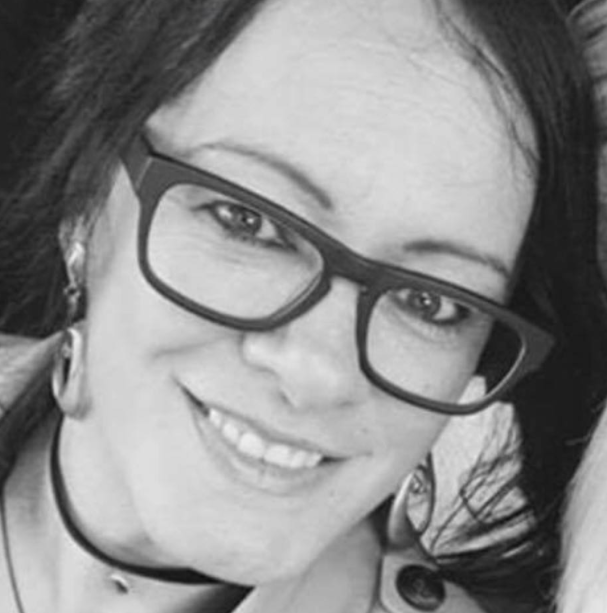Can Mormonism move beyond its white, middle-class American base to become a truly global religion? Or will it remain an American church with some carefully controlled international outposts?
So far, it has tended to embrace the latter. For example, in 2015 the Church had a once-in-a-century opportunity to appoint three new members of the Quorum of the Twelve. While many thought it was high time for at least one apostle of color, the Church instead moved in its usual direction; all three appointees were white men from Utah.
This weekend, the annual (and free!) Mormon Studies conference at Utah Valley University in Provo will focus on international, multicultural Mormonism, with an array of global speakers challenging the white American paradigm. Tomorrow’s keynote speaker, New Zealander and “Thoughtful Faith” podcaster Gina Colvin, spoke with Flunking Sainthood about what to expect in her talk, “There’s No Such Thing as ‘A’ Gospel Culture.” — JKR

Gina Colvin
RNS: How did you get involved in this conference on global Mormonism?
Colvin: I’ve been writing about post-coloniality in Mormonism for a while now and Joanna Brooks and I have an edited book coming out from the University of Utah Press called Approaching a Post-Colonial Zion. I suppose I’ve been noisy on this for a while and that probably made me a good enough pick for a conference on Multiculturalism and Mormonism.
RNS: You’re one of three keynote speakers. What are you planning to convey?
Colvin: I’m going to be talking about what Soong Chan Rah has termed the “Western cultural capture of the church.”
The reality is that Christian churches in the West are in decline even while Christianity in the Global South is blossoming and growing. Yet the model that the LDS Church is drawing on an old and colonial mission model and as such is an irresponsible failure.
RNS: Can you give an example?
Colvin: The way the Church plants itself in the global south destroys local leadership. We don’t give local people the opportunity to dream and envision the church in ways that are good for their people. The injunction is for a transplanted Mormonism from Utah that works against local cultures. The church asks people from all over the world, regardless of language, culture. and politics to run the enterprise the way that an American business would—replete with an outdated American corporate uniform.
Doing that makes you a stranger in your own culture. And it takes the freshness away that only intercultural practice will discover. It makes it so sterile and without any imagination so that the church simply becomes a vehicle through which bad copies of Utah are replicated all over the world.
RNS: If you could change the model, what changes would you want the Church to make?
Colvin: The Church needs to allow itself to be changed, to receive as much as it sends. It needs to be more relational. Look at the structure of LDS missions. LDS missions are technicist and corporatized. They are based more on numbers and reporting rather than relationships. Good mission practice outside of Mormonism focuses on relationships in dialogue.
And we all need to breathe that fresh air of wisdom and spirituality that comes from cultural diversity. The church is dying for spirituality.
I think we are losing the language of the Spirit in our highly correlated and rehearsed expressions of Mormonism. We’ve lost that joy that comes from transformation and transcendence. Our culture has become raw and barren, punitive and spiritually joyless. And I think a lot of that transformation or joyfulness can be learned from outside of ourselves. We’ve become so spiritually ossified.
RNS: What else?
Colvin: My thesis is that there’s no such thing as “a gospel culture.” I’d like people to see how intolerable and what nonsense the very notion of a “gospel culture” is. The problem with a gospel culture is that it looks suspiciously like a Western culture that a general authority would recognize: white, patriarchal, capitalist, corporatized, hierarchical. There’s also an attachment to theological positivism, the attempt to prove intangible concepts. Some things are intangible because they’re supposed to be intangible. We’re talking about God. And God has always been, and should remain, a beautiful mystery who makes His or Her appearance in the wounds of the world—not in its certainties.
RNS: Did you grow up in the LDS Church?
Colvin: Yes. I was the daughter of a heritage Mormon Maori man and a convert teen mother who were not married. So I was raised by a single white mother in a very Maori church. Then I was prohibited from going to church because she married a very Catholic man. But having said that, my nanny and her family were Dutch Baptists. So on a Sunday, I would go to the Baptist Church and the Mormon church, and eventually the Catholic Church as well. I’m MorBapLic.
RNS: How did that change your perspective?
Colvin: Interesting question. I think it’s made me appreciate how important God and compassion and love are in the conversation, because those are the only things that make sense across different traditions. I can see that people love God in different ways, and I’ve been really enriched by it.
Gina Colvin lives in New Zealand with her husband and six sons. In addition to the UVU conference, you can also catch her on Tuesday, April 4 at the University of Colorado-Boulder, where she will speak about reclaiming Maori mythology from colonial “interpretation.”
Then she’ll return to Utah from April 7 to 9 to lead a women’s retreat at the University of Utah. The UVU and UCB lectures are free; the retreat is $250 for the program, lodging, and meals.
TO READ:
Naming of 3 new Mormon apostles raises questions about race, international diversity (10/5/15)





